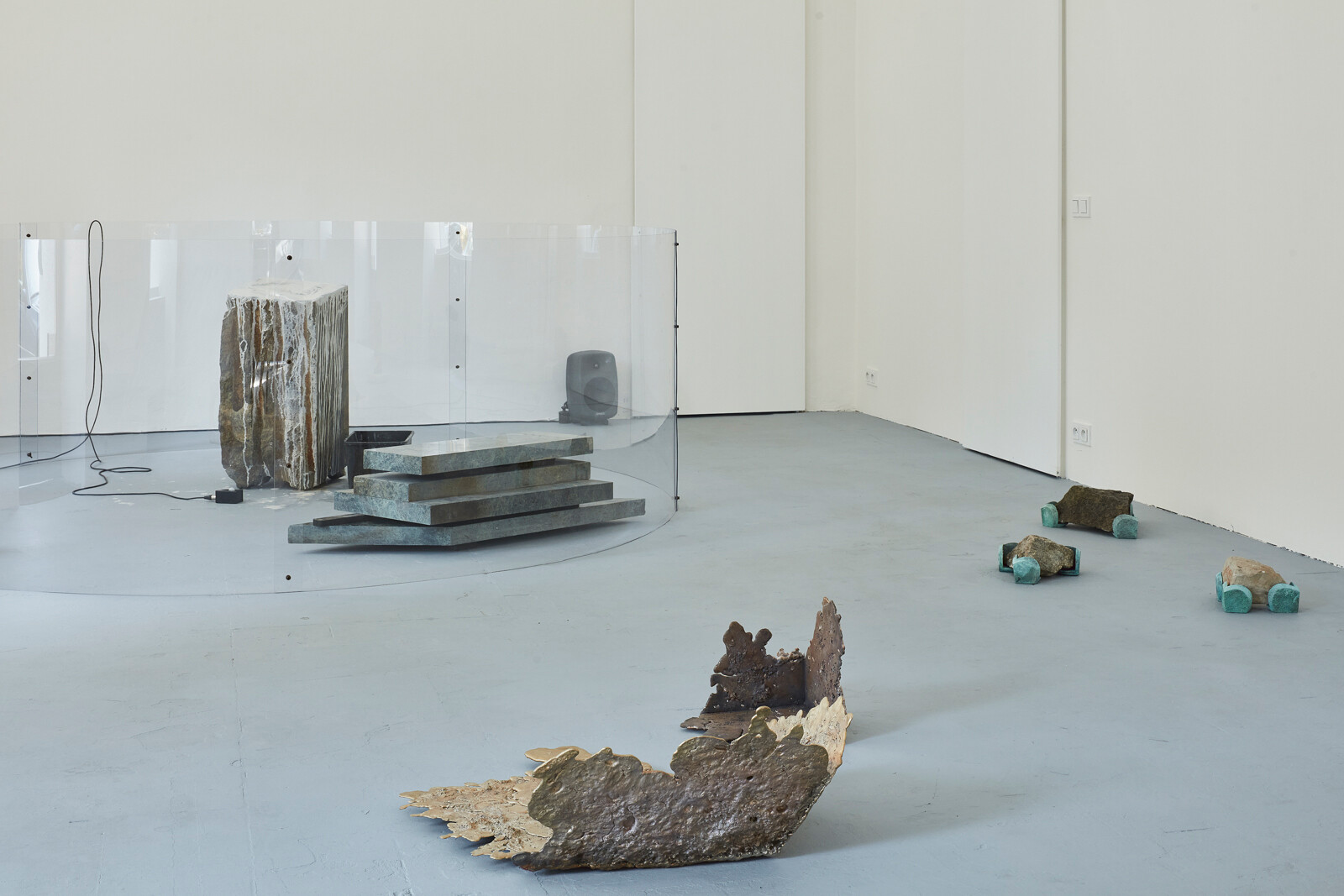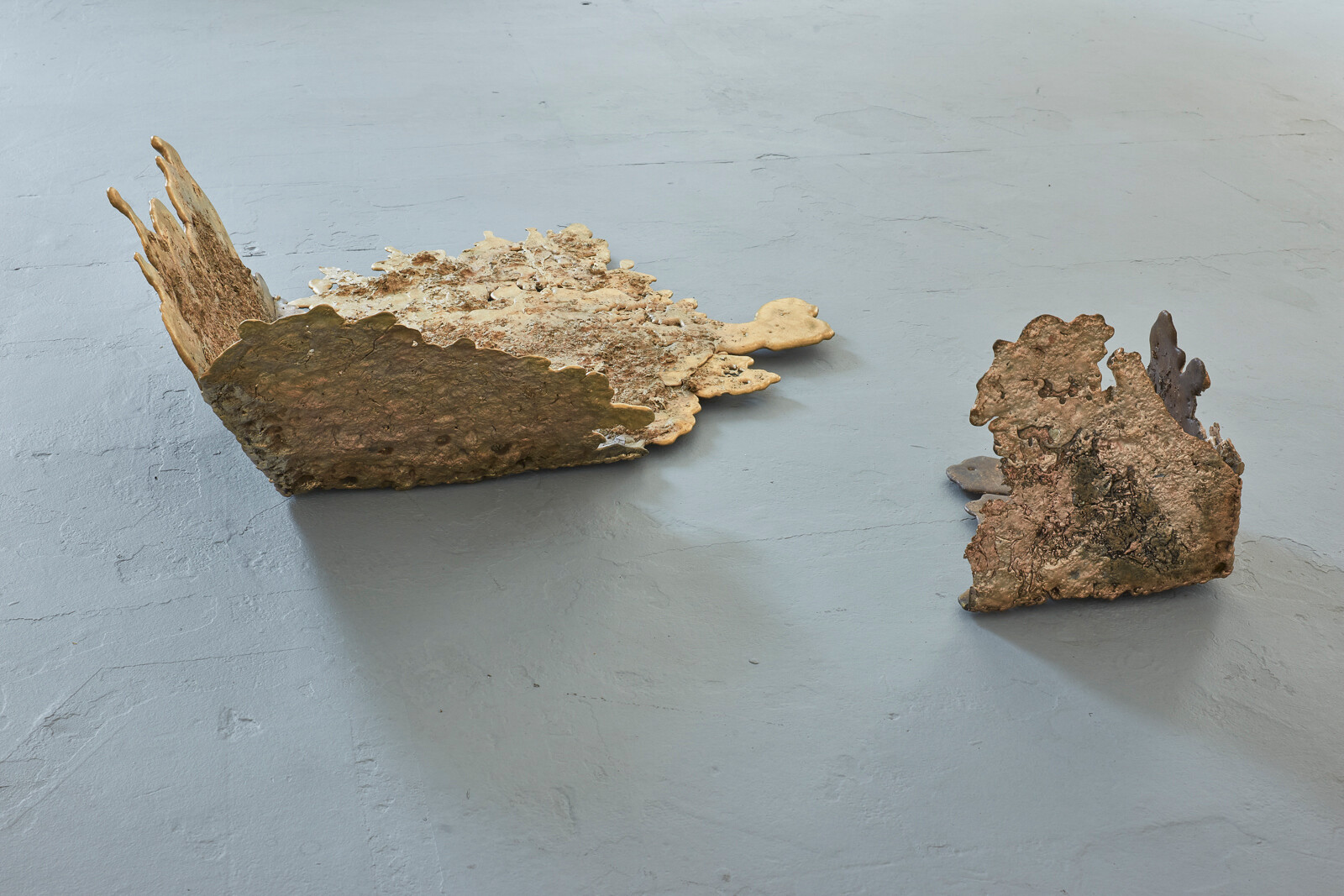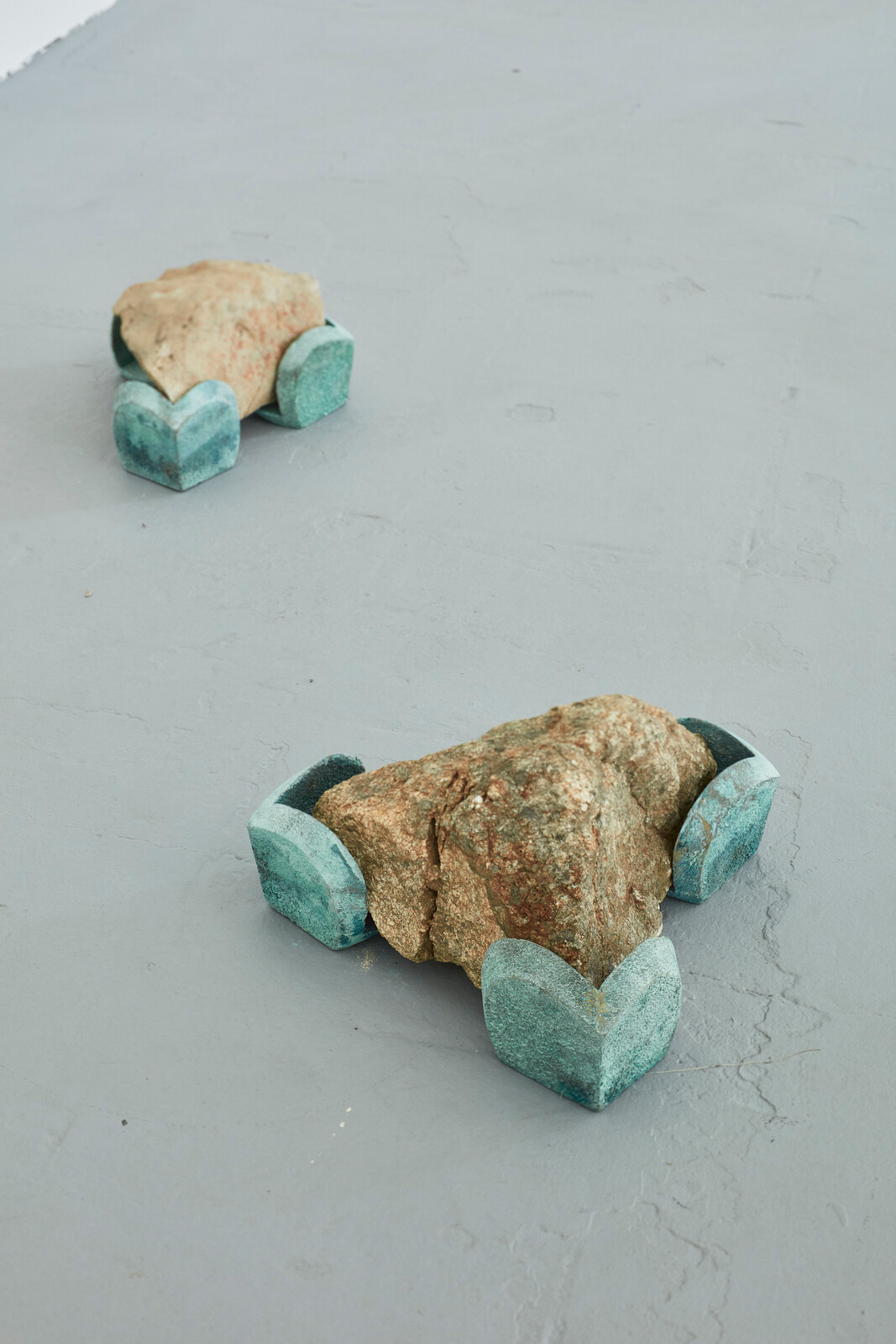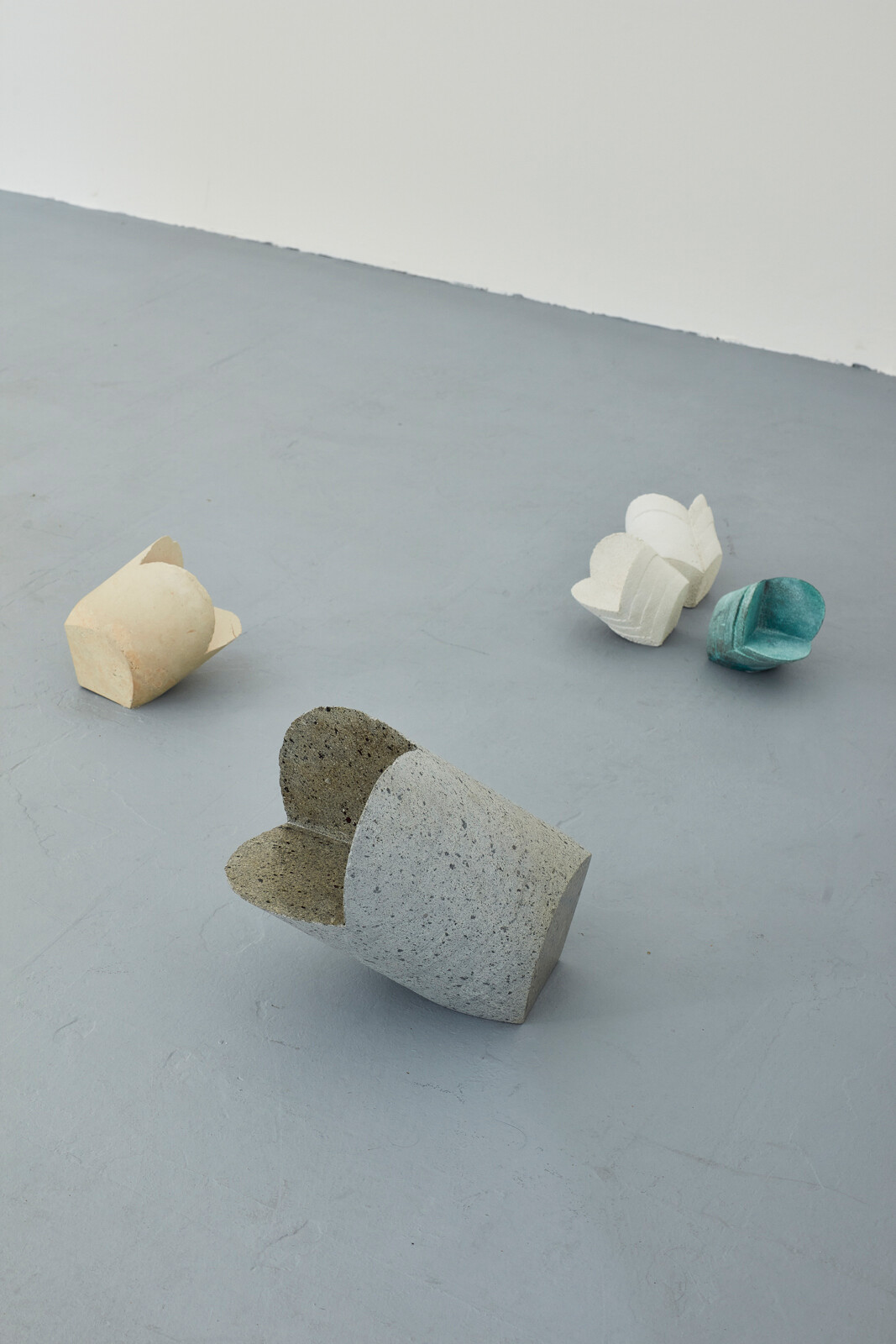Corner in Focus
September 27–November 18, 2023
Vítkova 2
18600 Prague
Czech Republic
Hours: Wednesday–Friday 1–7pm,
Saturday 2–6pm
The corner, the nook: a place of shame, yet from the opposite perspective a street intersection. But also a crotch, an erotic organ. These are only a few spontaneous associations, yet essential in all cases is what happens in the corner: movement, yet simultaneously the refuge of peace, the support of a weight or a means of bordering. The corner is a place where things happen in hiding, where the walls serve as a boundary through which one cannot see.
Corner in Focus presents an open, an opening center. A center where movement enters and from which movement emerges, the movement of becoming a sculpture, the movement of the haptic acquiring of shape and form. From this center, which is always the same and nonetheless different, improbable volumes emerge that obscure each other, that undulate, that form layers. Movement only seemingly emerges from the center; it is organized around it. It is the center of a corner around which the world revolves, along with our thoughts addressed toward art. As such, the exhibition thematizes and investigates the position of the craft of stone sculpture in the digital age.
The abrasive activity of grinding and polishing stone is accompanied by sound vibrations. In collaboration with the guest artist, Ján Gašparovič, a sound installation was created for the exhibition, made present in the gallery space through the stereophonic reproduction of the sound of grinding. The use of digital sound recording directly from the surface of the object, using geophonic technology, allows for transmission of vibration from the volume of the stone substance.
Curator: Daniel Grúň
Matej Gavula (1972, Bratislava) is a visual artist active in Bratislava. He graduated from the department of stone sculpture at the Secondary School of Applied Arts and then studied at the Bratislava Academy of Fine Arts in the Glass Atelier. He works in the media of sculptures and objects, videos, and performance. In recent years, he has presented his work at such exhibitions as Exploding Star (with Ján Gašparovič), New Synagogue of Žilina, 2023; Promenade, Kunsthalle Bratislava, 2021–22); House of Rituals, Gallery Tabačka, Košice, 2021; Homo Faber, Július Koller Society, Bratislava, 2020; They Are Given: Park, Fountain, East Slovakian Gallery, Košice, 2020; Abrasive Society, tranzit.sk, Bratislava, 2019; Otras, HotDock Project Space, Bratislava, 2019; Stratená forma/Blind Mould, SODA gallery, Bratislava, 2018; Continuously Growing Horizontal Underground Stems – Geopoetics in Times of Anthropocene, Galéria Plusmínusnula, Žilina, 2017; as well as I Take Pleasure in Attention, Central Slovak Gallery in Banská Bystrica, 2018; Pretty Soon If This Keeps Up I’m Going to Have to Envelop the Entire Universe, Gdańsk City Gallery, 2018; Shell Game, MeetFactory, Praha, 2017; or Panphilia, Zahorian & Van Espen, Bratislava, 2016.
Daniel Grúň (1977, Piešťany) is an art historian, curator, and poet, an associate professor at the University of Fine Art in Bratislava and a researcher at the Institute of Art History of the Slovak Academy of Sciences. He is the head of the Július Koller Society and was co-curator of the artist’s first international retrospective Július Koller: One Man Anti Show, MUMOK, Vienna (2015–16). Among his recent publications are: Daniel Grúň and Matej Gavula (eds.), Healing Through Sculpture. Juraj Gavula and His Work for Architecture (2022); Daniel Grúň, Christian Höller and Kathrin Rhomberg (eds.), White Space in White Space / Biely priestor v bielom priestore, 1973−1982. Stano Filko, Miloš Laky, Ján Zavarský (2021); Daniel Grúň (ed.), Subjective Histories. Self-Historicisation as Artistic Practice in Central-East Europ (2020), and others.
VI PER Gallery based in Prague, Czech Republic, is a non-profit institution focused on architecture together with its relations and points of intersection with contemporary art, urbanism, design, and media, as well as the political, legal, social, economic, ecological, and spatial contexts, which help to shape architecture and the built environment. VI PER Gallery provides space for interdisciplinary research and discussion in order to generate topics that represent new connections and impulses.









